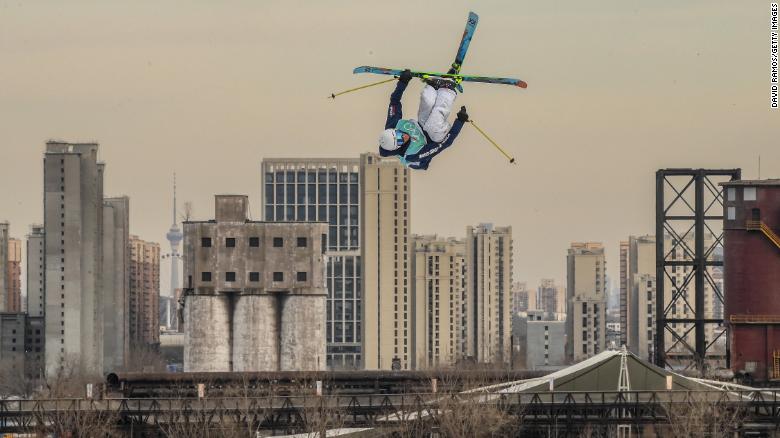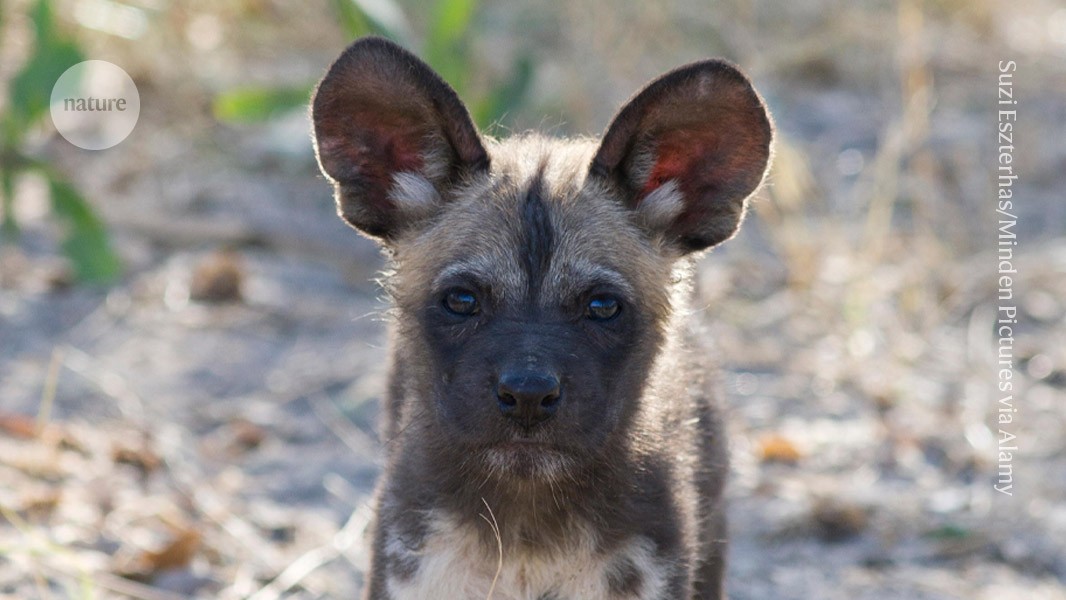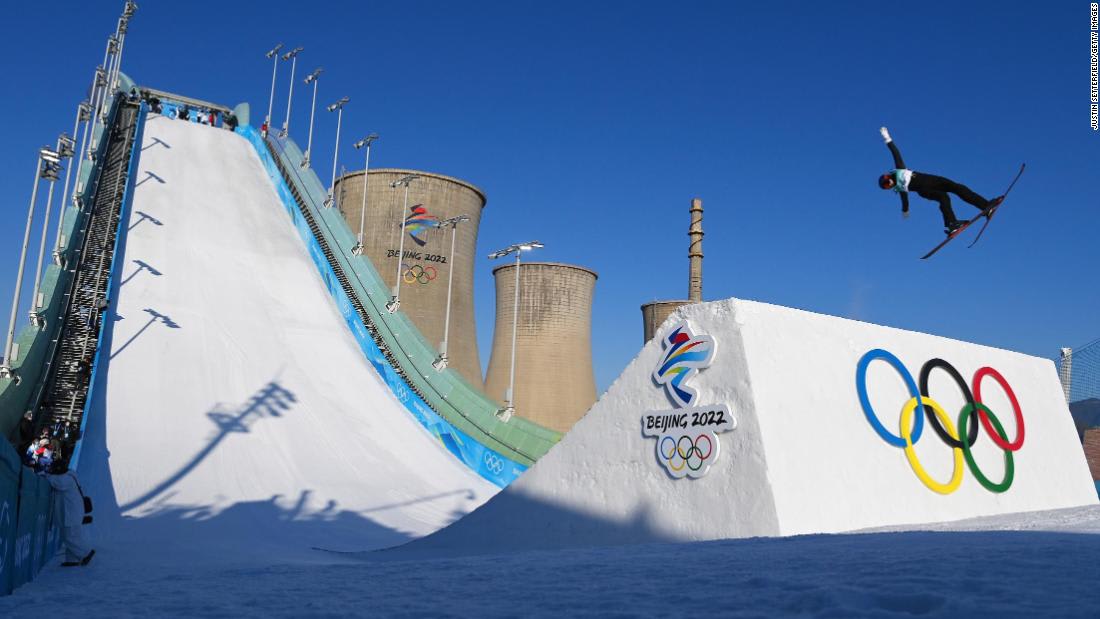
Winter Olympians are accustomed to performing their awe-inspiring feats against the backdrop of spectacular snow-capped mountains.
But Beijing’s ski jump — Big Air Shougang — is drawing attention for its much edgier, urban setting.
Behind the skiers launching themselves off the 60-meter-high (196-foot) ramp are furnaces, tall chimney stacks and cooling towers on the site of a former steel mill that for decades contributed to the Chinese capital’s notoriously polluted skies.
The mill, founded in 1919, ceased operations more than 15 years ago, as part of efforts to clear the air in the capital ahead of the 2008 Summer Olympics.
That left a large stretch of prime city center land, ripe for rehabilitation and regeneration, says engineering and design company ARUP, which transformed the site into a bustling hub for tourism and art exhibitions.
The rusty, aging remnants of the mill were never demolished — not even for the big air jump at the 2022 Winter Olympics.
Instead, the old mill has been incorporated into Big Air Shougang’s design. One of the cooling towers even bears the logo for the Games.
The jump has captured the attention of social media users, in part for the mountains of fake snow generated to host the event, but also intrigue of what these towers are and why they’re still standing, right behind the jump.
Some Twitter users wondered if it might be a nuclear plant.
“The Big Air stadium at the Olympics seems to be right next to the Springfield Nuclear Power Plant,” a user by the name of @jlove1982 wrote.
Another, @LindsayMpls, wrote: “Feels pretty dystopian to have some kind of nuclear facility as the backdrop for this Big Air skiing event.”
The Shougang Big Air is the world’s first permanent big air venue for long-term usage. It sits on the bank of the Qunming Lake, on the west side of the cooling towers at 88 meters (288 feet) above sea level, according to architecture firm TeamMinus, which designed the jump.
Read the full story:








More News
Opinion | Marjorie Taylor Greene Is Not as Powerful as She Thinks She Is
How to Know When a Good Dog Has Gone Bad
4 Children From Gaza Arrive in U.S. for Medical Treatment